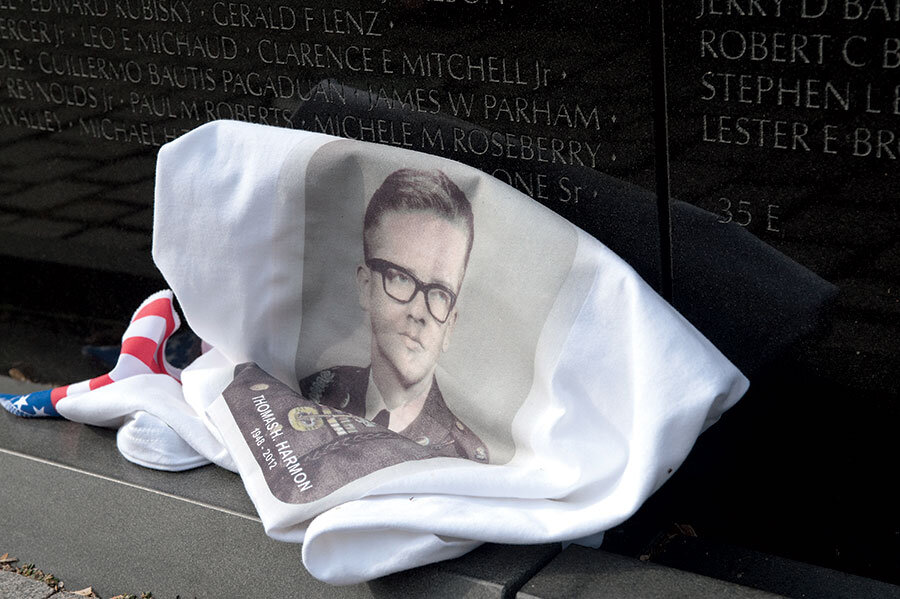The art of public mourning
Loading...
Memorial Day in the United States was established not long after the Civil War as a way for the nation to honor members of the military who lost their lives in service. Amid other traditions that have sprung out of the holiday – parades, picnics, and concerts on the lawn – people still pay solemn respects at war memorials, sometimes leaving an ephemeral offering such as flowers.
But more often these offerings are substantial and lasting. Photographs, teddy bears, drawings, shoes, handwritten notes are just some of the tokens left at memorial sites. These present something of a curatorial problem: What should happen to all the stuff?
“This has become the way that Americans memorialize,” says Rainey Tisdale, a curator for “Dear Boston: Messages from the Marathon Memorial,” an exhibit created for the anniversary of the Boston Marathon bombings using items left at the memorial site.
This phenomenon first emerged on a large scale in the US at the newly built Vietnam Veterans Memorial in Washington, D.C., in 1982. The National Park Service decided that every object left at the site helped to tell stories about the people honored there and should be saved. More than 400,000 artifacts are now stored at a Maryland warehouse.
It fostered a ritual that blooms at any makeshift shrine following a tragedy, as it did after the Oklahoma City bombing, the Sept. 11 attacks, the Sandy Hook massacre, and the Boston Marathon bombings. Ms. Tisdale sees it as a confluence of factors: A consumption society fed by a 24-hour news cycle and the mass reach of social media means that many people feel tragedies very deeply and then use “stuff” as a way to express emotion and build connection.
“We often work things out that we are feeling through our stuff.... [People] can’t just track down [victims’] families and give them a hug ... so instead they take stuff to a public place,” she says.
In Boston, it created a particular challenge when then-Mayor Thomas Menino decided the marathon memorial items should be saved. Most of the cultural bandwidth in the city is used to preserve and retell early American history, Tisdale says, not interpret modern and ongoing events like the Boston Marathon. A collaborative effort emerged. Boston City Archives collected the items, and storage center Iron Mountain in Northborough, Mass., donated space to hold the 250 boxes. Most recently, Northeastern University created “Our Marathon,” an online, crowdsourced site at which to record memories and see images of the items left at the memorial, giving them perpetual accessibility.
It’s a creative effort that could set the stage for the future of memorializing, beyond the offering of a teddy bear.








